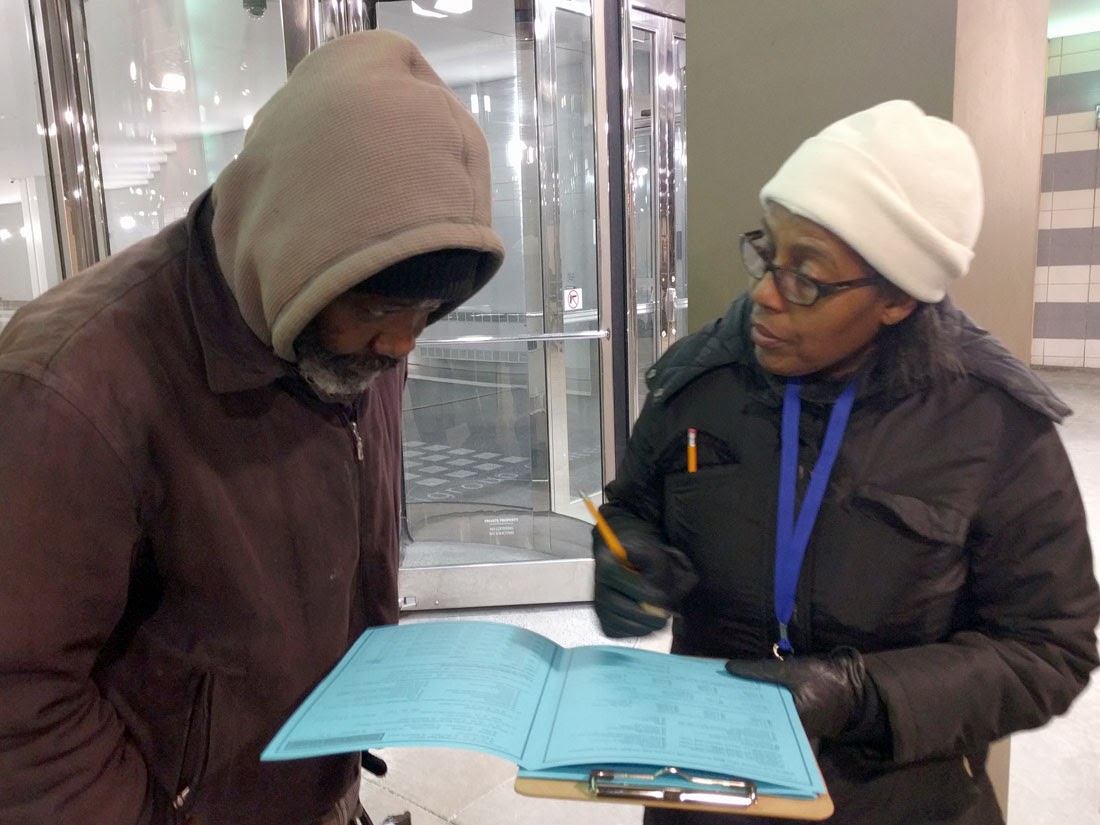By Harry Huggins
Hundreds of volunteers canvased Chicago late Jan. 26 to count every person sleeping in the city’s parks and underpasses.
I drove around Chicago’s Near West Side with Dorothy Yancy, Phoebe DePree and Carolyn Hankins-Page for five hours that night as part of the annual point in time count. The survey takes place in ever major American city, and it helps the federal government decide how much money a city receives for homelessness prevention in the coming year.
My group started in Pilsen around 9:15. DePree interviewed a man with a shopping cart near a park full of statues of Mexican-American heroes. He said he was from Ecuador and became homeless when his artists’ loft evicted him and his colleagues.
We spent most the night driving slowly, zig-zagging around our assigned neighborhoods. Our pre-count training told us to look for people sleeping in the open, asking for money or carrying bags of clothing. Some people answered all the survey questions, some we had to just tally on a sheet.
When we were almost done in Pilsen, we approached a man walking down a dead-end street to decide whether we should ask if he had a place to sleep tonight. He waived a gun at us. We moved on to the Ogilvie train station in the Loop. Hankins-Page interviewed a man near the entrance, R.J., who told us he became homeless after being released from prison. He planned on sleeping on the trains that night.
We surveyed three men at Ogilvie and tallied a few more sleeping at tables. At around midnight, we ran into the station’s security guards. They told us to leave because we were attracting more homeless people. They referred to the homeless men as “Code 4s.” Yancy hated this.
Back in the car, Yancy explained the count’s benefit for us in the car and the people we were surveying. As a formerly homeless person herself, Yancy said that people on the streets appreciate telling their stories and having people listen to them.
We checked for people at campsites and makeshift beds under train tracks near the river. We won’t know the total number of homeless people counted in all of Chicago until the summer, but we had an idea of a trend by the time we finished. Yancy said that the 13 people we counted that night was more than double last year’s number.

